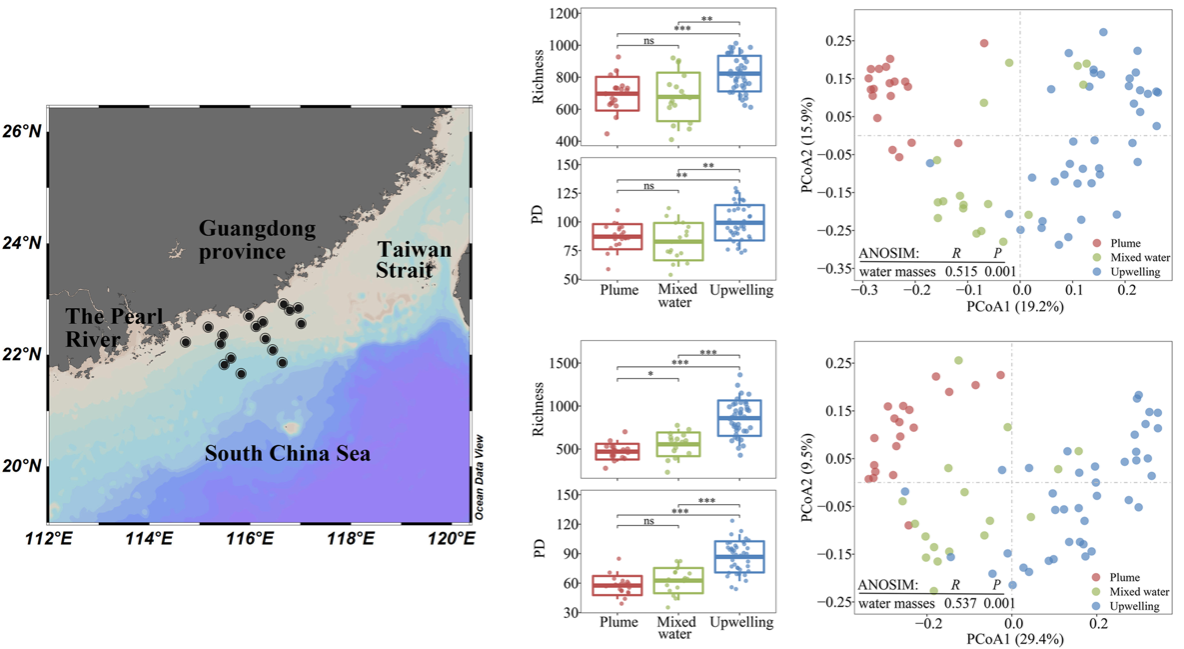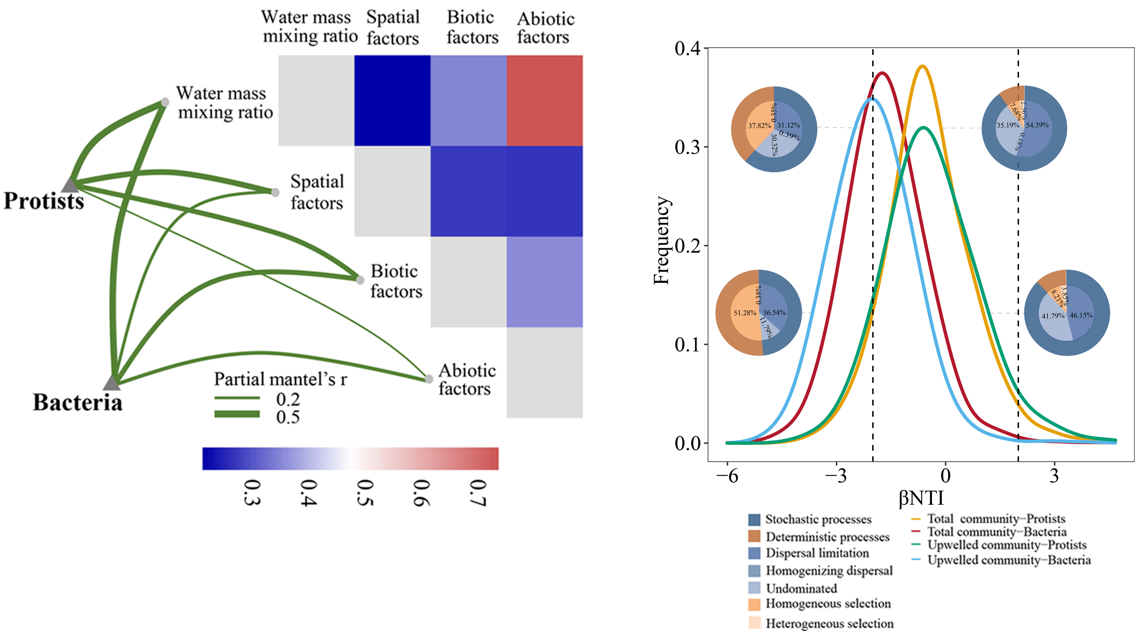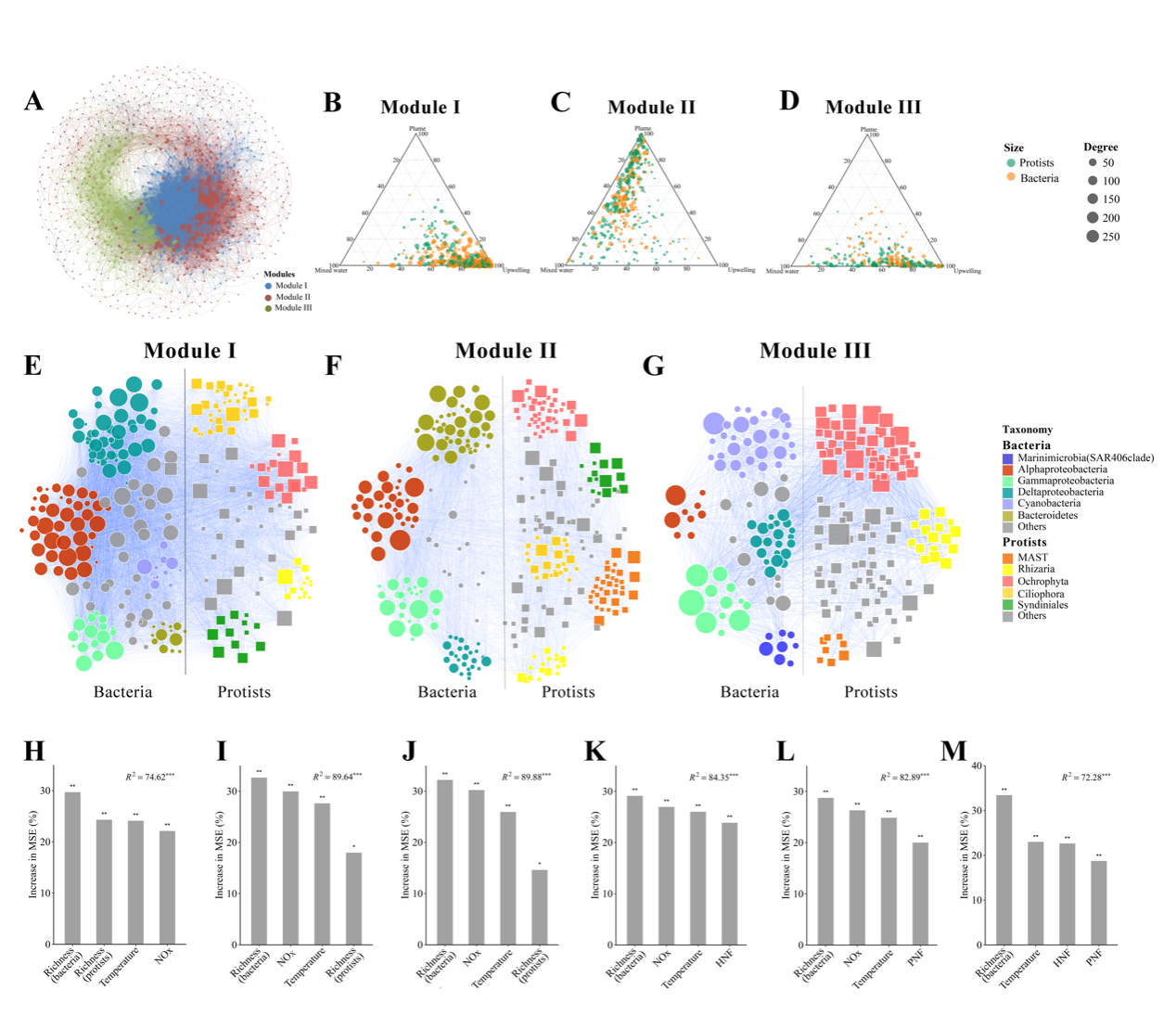A research team led by Professor Bangqin Huang from the College of the Environment and Ecology of Xiamen University has made new progress in the study of microbial community assembly mechanisms in coastal upwelling. The findings, which were published in Water Research, demonstrate that microbial community composition and diversity are water mass-specific, and that water mass, cross-domain biotic factors, and temperature collectively influence microbial distributions. The results reveal that stochastic processes play a key role in community assembly in complex, river-influenced coastal upwelling systems, and emphasize the importance of including water masses and cross-domain biotic factors in the analysis of microbial distribution drivers in upwelling systems.

Figure 1: Sampling map and microbial diversity and community composition among water masses
The river plume and the coastal upwelling are the two most important and typical regions at the ocean-continent interface. The river plume-coastal upwelling coupling system receives large amounts of river runoff and is heavily influenced by physical processes such as seawater upwelling, which complicates the relationship between microbial communities and environmental factors in the system. Previous studies have mostly focused on the effects of abiotic factors on bacteria, and little is known about how physical processes and biotic and abiotic factors interact to shape microbial distribution in the river plume-coastal upwelling coupling system.

Figure 2: Drivers and assembly mechanisms of the microbial community (embedded pie chart showing the relative roles of stochastic and deterministic processes)
Through underway sampling and daily observations of the frontal zone, we employed 16S and 18S ribosomal RNA sequencing to disentangle drivers and mechanisms shaping the protist-bacteria microbiota in a river-influenced coastal upwelling system. Our findings indicate that the composition of microbial communities is water mass specific. Collectively, water mass, local water chemistry (mostly temperature) and biotic interaction (mostly cross-domain biotic interaction) shaped the protistan-bacterial communities. We found that during the southwest monsoon, the Yuedong upwelling was influenced by the Pearl River plume, and that interactions between water masses resulted in the exchange of communities in the frontal zone, whereas the microbial communities were strongly dispersal limited between water masses. We tracked the changes of biotic and abiotic factors in different water masses and found that biotics (especially cross-domain biotic interactions) and temperature play important roles in shaping microbial communities. Further analysis revealed that temperature and cross-domain biotic factors had a different effect on protists versus bacteria, with bacteria being more strongly correlated with temperature and other physicochemical parameters than protists, indicating that bacteria are more closely coupled to physicochemical factors; cross-domain biotic factors had a greater effect on protists, possibly reflecting their high reliance on biotic interactions but less on abiotic resource consumption. Further analysis using the null model revealed that stochastic processes were the primary drivers of microbial community assembly in the river plume–coastal upwelling coupling system, whereas deterministic processes had agreater impact on communities in the upwelling, indicating that the invasion of the Pearl River plume has more stochastic effects on the coupled system's microbial communities. This study advances our knowledge of the distribution, drivers, and assembly mechanisms of microbial communities in the river plume–coastal upwelling coupling system.

Figure 3: Patterns of co-occurrence of microbial communities and their drivers
Dr. Ping Sun is the paper's first author and corresponding author; Professor Bangqin Huang is the co-corresponding author; and graduate students Ying Wang and Xin Huang, as well as engineer Lei Wang, are coauthors. This research was supported by the National Natural Science Foundation of China (42130401, 42141002, 31772426, U1805241).
By Ping SUN | College of the Environment and Ecology, Xiamen University